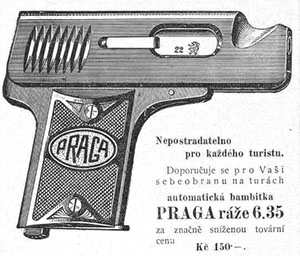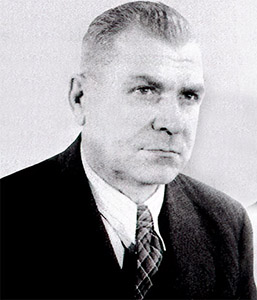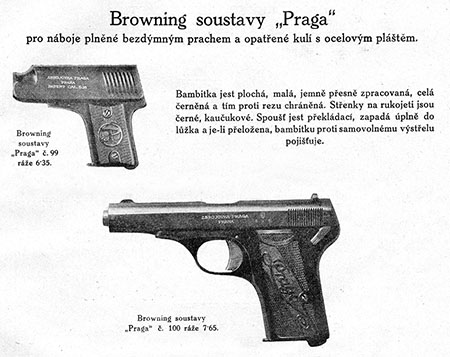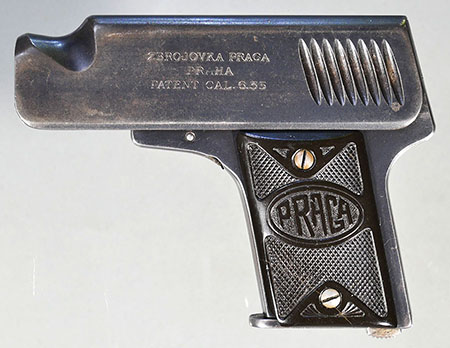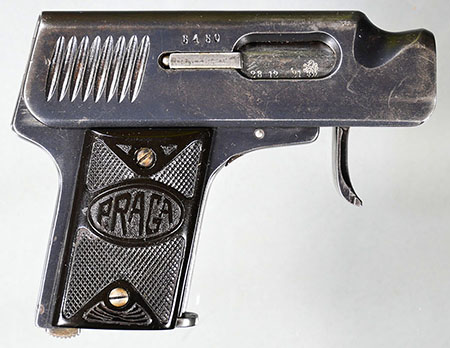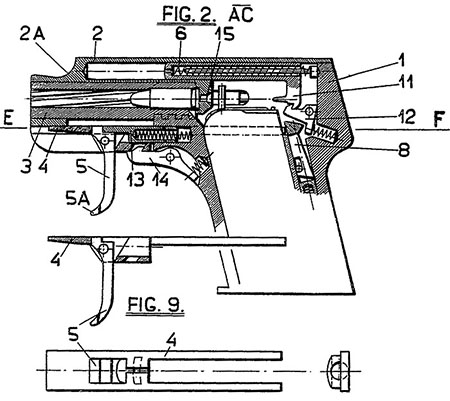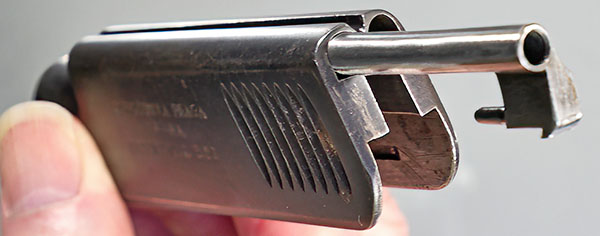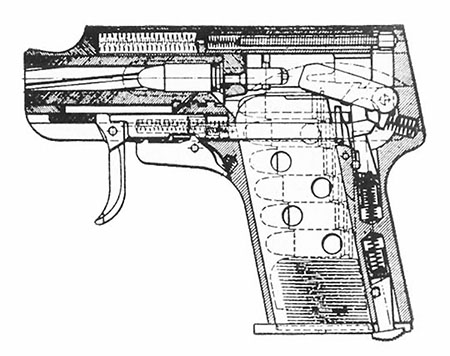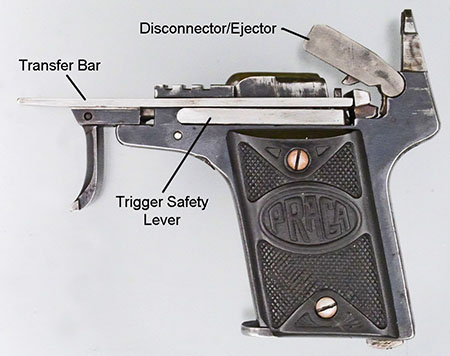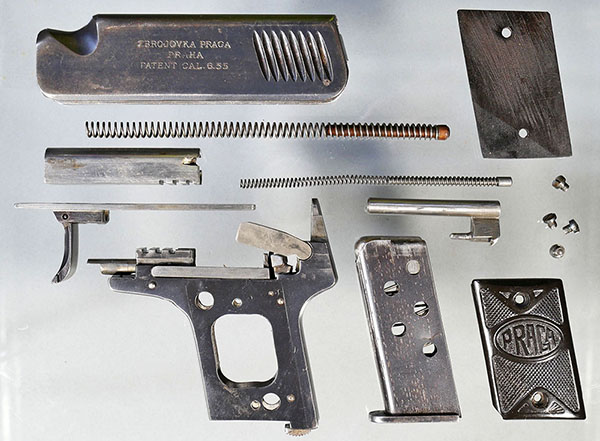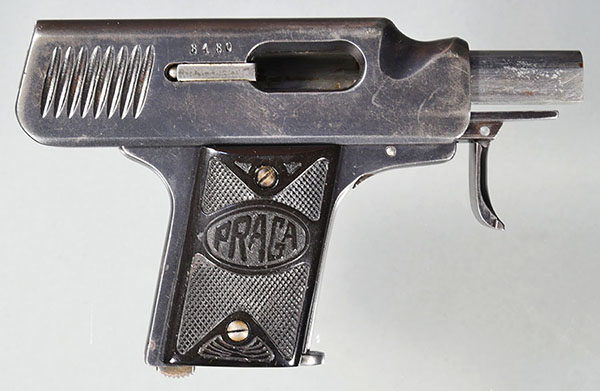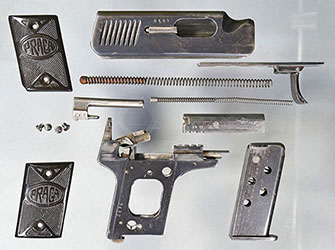 |
||||||||||||||||||||||||||||||||||||||||||||||||||||||||||||||||||||||||||||||||||||||||||||||||||||||||||||||||||||||||||||||||||||||||||||||||||||||||||||||||||||||||||||||||||||||||||||||||||||||||||||||||||||||||||||||
 |
||||||||||||||||||||||||||||||||||||||||||||||||||||||||||||||||||||||||||||||||||||||||||||||||||||||||||||||||||||||||||||||||||||||||||||||||||||||||||||||||||||||||||||||||||||||||||||||||||||||||||||||||||||||||||||||
|
The Zbrojovka Praga Model 21 by Ed Buffaloe Historical Background
The Jan Nowotný company was founded in 1865 by Jan Nowotný (1839-1893) to make hunting rifles, and became one of the most important gunsmithing companies in Bohemia, which was at that time a part of the Austro-Hungarian Empire. After Nowotný’s death, the company was controlled by his widow until 1904, when his son Antonín Nowotny (1871-1938) took over. At some point, the company’s hand-made weapons could no longer compete with factory made weapons from Belgium and Germany, so the J. Nowotný company became primarily a retailer of foreign weapons until about 1910. In 1918, the J. Nowotný company was transformed into Zbrojovka Praga, the first Czech company to make handguns. Zbrojovka Praga (Prague Arms Factory) was founded on 5 January 1918 with the signing of a partnership agreement between the J. Nowotný company, Dr. Karel Pelikán, director of the Czech Industrial Bank in Prague, Jiří Souček, director of the Czech Bank in Prague, Bohuslav Jelínek, procurator of the Czech Industrial Bank in Prague, and Antonín Nowotný. The new company was capitalized with a total of 900,000 Czech crowns, each bank providing 350,000 crowns, and the J. Nowotný company and Antonín Nowotný providing 100,000 crowns each. The purpose of Zbrojovka Praga, as registered, was: "...to produce all kinds of weapons, components and ammunition, as well as to trade the products and objects thereof. The Company shall purchase, or furnish for such purposes,
Zbrojovka Praga initially operated out of a rented building, but also purchased a plot of land in Vršovice, which was then a suburb of Prague but has since been incorporated into the city, and built a factory there. By 28 October 1918, machines for the production of pistols had been installed, and by early 1919 a military pistol in 7.65 mm was already being manufactured. The pistol was designed by Václav Holek. Václav Holek (24 September 1886 - 13 December 1954) is among the most important weapons designers of Czechoslovakia. He was born in Malé Nepodřice near Písek in South Bohemia, attended public school there from 1892 to 1900, and was apprenticed at the Jan Chmelík rifle works in Písek starting in 1901 and lasting until 1904. In 1905 he went to work in Vienna at the Antonín Mulacz rifle company. During the years he was employed in Vienna, he graduated from the Industrial School of the Technological Industrial Museum in Vienna. In 1910 he moved to Prague where he went to work for the J. Nowotný company as an independent gunsmith, eventually rising to the position of assistant foreman and then foreman. Holek was instrumental in perfecting the machine production of Holland & Holland system double hunting rifles at J. Nowotný.
Holek was transferred to the newly established Zbrojovka Praga, where he designed the Praga Model 1919 pistol in 7.65 mm, intended for use by the new Czech army and police, and the Praga Model 1921 pistol in 6.35 mm, intended for commercial sales. In 1924 he designed his first machine gun, the Praga vz. 24 which, however, was not ultimately manufactured at Zbrojovka Praga, but at Československá Zbrojovka Brno (ZB), where Holek began work on 1 January 1925. His improved light machine gun design was manufactured as the ZB 26, and went through further redesigns as the ZB 30 and ZB 30J. ZB also manufactured Holek’s ZGB 33 machine gun, licensed to the British as the BREN, and Holek’s heavy machine gun, the ZB 37.
As head of the experimental workshop at Zbrojovka Brno, Holek continued his work on machine gun design with his brother Frantisek during and after World War II. He was responsible for more than 75 patents, but virtually all were assigned to the companies he worked for and so are hard to identify as his. He retired in 1952 but continued as technical adviser to Zbrojovka Brno until his death in 1954. The Zbrojovka Praga Model 21
The Model 1921 pistol was likely designed in the first half of 1920, based on the fact that the French patent states that a limited Czech patent was filed on 3 October 1920, and two Model 1921 pistols were proof tested at the Prague proof house on 15 October 1920. The Czech patent has never been located; perhaps it was not granted. But the word “Patent” on the slide indicates that the company had likely filed for a patent in 1920. The French patent № 535530 was filed 14 May 1921, well after production had begun, and granted 26 January 1922.
Two more early pistols were proof tested on 16 December 1920, however the bulk of production took place in 1921, when 4790 pistols were tested; and a further 2111 were tested in 1922. Production of the Model 1921 ended in September 1922, but untested pistols remained in stock. Two Model 1921 pistols were tested in 1923, and an additional 460 in 1925. Clearly, not all Model 1921 pistols were proofed in Prague, because the lowest serial number recorded is 5 and the highest is 8639, so likely at least 8700 total were made; un-proofed and un-numbered examples are known. Berger states that he does not believe this many were made: “[t]he serial numbers were probably intermingled with those of the .32 pistol.” However, proof records indicate that at least 7367 pistols in 6.35 mm were tested. Interestingly, Berger states that when Zbrojovka Praga was being liquidated in 1926, František Dušek purchased about a thousand unfinished Model 1921 pistols, which he finished and sold. The Model 1921 is a 6.35 mm automatic pistol of unusual and innovative design, unlike any other before or since. It features an unlocked breech and a single-action folding trigger. The slide and frame are held together by the double-pronged transfer bar, which fits into slots on both inner walls of the slide, and slots on either side of the frame beneath the chamber of the barrel. The two rails of the transfer bar act directly on the sear lever, which in turn rotates the sear itself, providing a smooth, even trigger pull of about 7.8 pounds. Coil springs are used throughout.
The slide is drilled at the top, on both sides—the right side holds the long recoil spring and its unusual wooden guide rod, while the left side holds the striker tube and the long striker spring and guide rod. The striker itself is a dogleg projection off the rear of the tube. The French patent makes the following claims about the design: “The arrangement of the coil springs and enclosure of the recoil and percussion springs parallel to each other above the barrel ... permits the use of particularly long coil springs, such as would otherwise not have found sufficient space in pistols of different construction. These coil springs cause a very elastic and very smooth action of the pistol, and increase the accuracy of the shot.” The Military History Institute of Prague entry for the Model 1921 pistol states: ‘The use of wood was justified by Zbrojovka Praga in the instructions by the effort to achieve "elastic and quiet movement of the bolt"’.
The trigger and dual transfer bars are retained by a latch inset in the frame behind the trigger. The trigger is tensioned by a spring and plunger set in the frame just above the trigger latch. The trigger has two tabs on its bottom which fit into the inner slots of the slide, allowing it to be retained in its folded position. When the trigger is folded up, the transfer bars are locked and cannot move. Moving the slide back about 1.5 mm causes the trigger to spring down.
There is a magazine safety on the Model 21 which is not shown or described in the patent, but which can be seen in the schematic drawing from the manual, it consists of a seesaw lever behind the magazine. When the magazine is withdrawn about half way, the top of the lever tilts backward and blocks the sear. Another lever on the left side of the gun, just beneath the transfer bar, moves backward to block the sear when the trigger is folded up, positively preventing the gun from firing if it is dropped. This allows the gun to be carried safely with a cartridge in the chamber; the folding trigger essentially serves as the safety. There is no other manual safety on the pistol. The cutaway area at the front of the slide enables it to be easily retracted, allowing the trigger to spring open. The patent claims that the gun can be operated one-handed, using the cut-away at the front of the slide. In practice, one-handed retraction of the slide can be difficult, especially with small hands, but it can be easily drawn back enough to lower the trigger, which is all that is really necessary.
There is an unusual lever at the rear of the pistol on the left side, which serves as both the disconnector and the ejector. When the slide moves to the rear, under recoil, this lever is pressed down and it in turn pushes the sear release below the level of the transfer bars, thus preventing the gun from being fired when the slide is out of battery. The inside front of the disconnector has a small projection which serves as the ejector when the slide is at its rearmost point. The magazine, which is of conventional design, has a heavy base plate, a rounded follower, and holds six cartridges, with five viewing holes on each side. The slide locks open on the rear of the magazine follower after the last round has been fired, and closes when the magazine is withdrawn.
The finish of the Model 1921 is rust blue. Stocks are of checked hard rubber with an oval cartouche in the center containing the word “PRAGA.” There are eight oval-shaped plunge-milled serrations at the rear of the slide on both sides, angled forward. The serial number is just above the extractor on the right side, and is also found stamped on the frame beneath the right grip and on the bottom of the barrel. Small parts are stamped with the last three digits of the serial number. The left side slide inscription is in all-capital serif characters as follows: ZBROJOVKA PRAGA The Model 1921 was not a commercial success, due to several factors—the factory was not fully automated, with no strict method of measuring tolerances, so the guns required a certain amount of hand fitting, making them more expensive to manufacture; but, in order to compete, they had to sell for less than comparable foreign-made pistols, so essentially they cost more to make than they could be sold for. Furthermore, the economic times were not good in the 1920s, so money was tight, and the gun was small enough that it required a license to own under gun laws inherited from the Austro-Hungarian empire. Zbrojovka Praga was no more successful with its 7.65 mm Model 1919 military pistol than it was with the Model 1921. According to Skramoušský, a contemporary report indicates maintenance was poor at the plant in Vršovice, and production methods were never fully modernized. While Holek invented his machine gun there, its manufacture had to be transferred to Zbrojovka Brno. Zbrojovka Praga was reduced to making bayonets and practice barrels for Schwarzlose machine guns; it transferred a large number of unused machines to Česká zbrojovka in Strakonice. Zbrojovka Praga was liquidated in 1926 and its assets were purchased by Česká zbrojovka. Disassembly of the Model 1921
Note: The easiest way to reassemble the gun is to put the barrel in the slide and put a small piece of tape across the muzzle to hold it in place. Alternatively, the barrel may be inserted into the slide and the two held upside down while the springs are compressed and the frame attached. The magazine should be removed and the disconnector/ejector lever depressed for assembly.
|
||||||||||||||||||||||||||||||||||||||||||||||||||||||||||||||||||||||||||||||||||||||||||||||||||||||||||||||||||||||||||||||||||||||||||||||||||||||||||||||||||||||||||||||||||||||||||||||||||||||||||||||||||||||||||||||
|
Copyright 2017-2024 by Ed Buffaloe. All rights reserved. |
||||||||||||||||||||||||||||||||||||||||||||||||||||||||||||||||||||||||||||||||||||||||||||||||||||||||||||||||||||||||||||||||||||||||||||||||||||||||||||||||||||||||||||||||||||||||||||||||||||||||||||||||||||||||||||||
|
|
||||||||||||||||||||||||||||||||||||||||||||||||||||||||||||||||||||||||||||||||||||||||||||||||||||||||||||||||||||||||||||||||||||||||||||||||||||||||||||||||||||||||||||||||||||||||||||||||||||||||||||||||||||||||||||||
